The Real Secret to Low Content Publishing Success (That No One Is Talking About)
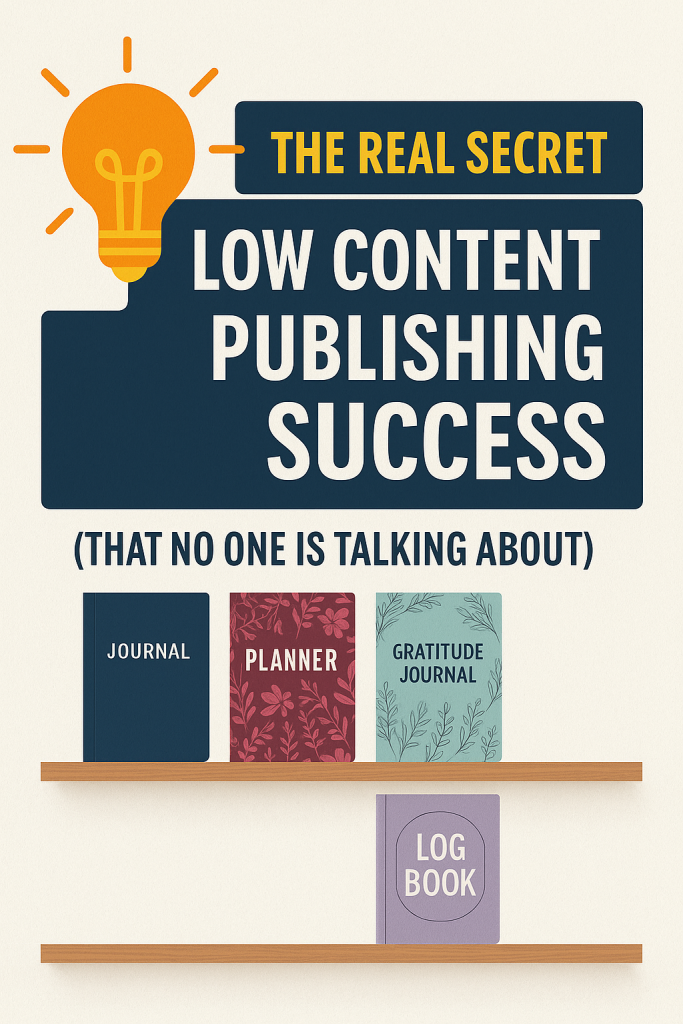
Most blog posts about low content books recycle the same tired advice: “Pick a niche.” “Use templates.” “Publish more titles.”
If that’s all it took, everyone would be earning passive income from journals and planners by now.
Here’s what actually works: success isn’t about how many books you publish, but how deeply you connect one book—or series—to an audience that’s genuinely craving something specific.
This sounds almost too simple, but it’s the hidden difference between publishing 100 generic notebooks that gather dust and creating 10 deeply aligned, audience-driven books that dominate categories and build loyal customers.
Let’s break down this overlooked strategy.
The Secret Is “Depth Over Breadth”—And Why Most People Miss It
Why It’s Not Widely Known
The majority of low content publishing advice dates back to KDP’s early days, when success really was a numbers game. Publish 100 lined notebooks, and odds were some would sell simply because competition was light.
Today’s landscape looks completely different. The market overflows with tens of thousands of nearly identical books. The “spray and pray” approach leaves most sellers frustrated with zero traction.
Why Depth Simplifies Success
Focusing on depth instead flips the entire game. You stop trying to appeal to everyone and start speaking directly to one well-defined group. Instead of spreading yourself thin, you stack value within a niche.
Think of it this way: would you rather own one restaurant where customers return every week, or try running 50 food trucks across the city with no loyal following?
Practical Steps
Here’s how to apply this practically:
Pick a niche with room for variations—gratitude journaling, fitness logging, shadow work, homeschooling planners. Create a series identity using consistent branding: similar fonts, color schemes, cover layouts. Readers will recognize your work instantly.
Publish a core book, then expand. Start with a base journal, add guided prompts, create a workbook version, develop a coloring-journal hybrid, or build a planner companion. Always include a “Want More?” page directing readers to other titles.
A small publisher created a “Shadow Work Journal Series” instead of 50 random notebooks. They produced a base shadow work journal, a guided version with prompts, a coloring and journaling hybrid, and a companion affirmation planner. Within six months, they dominated that micro-niche because readers kept buying the entire set.
Keywords Are Commodities – Audiences Are Assets
Why It’s Not Widely Known
Most KDP advice centers on keywords: find low-competition, high-demand terms, publish, repeat. While keywords matter for discoverability, they don’t build loyalty.
A keyword is just a doorway. The real goldmine is the audience that keyword points to.
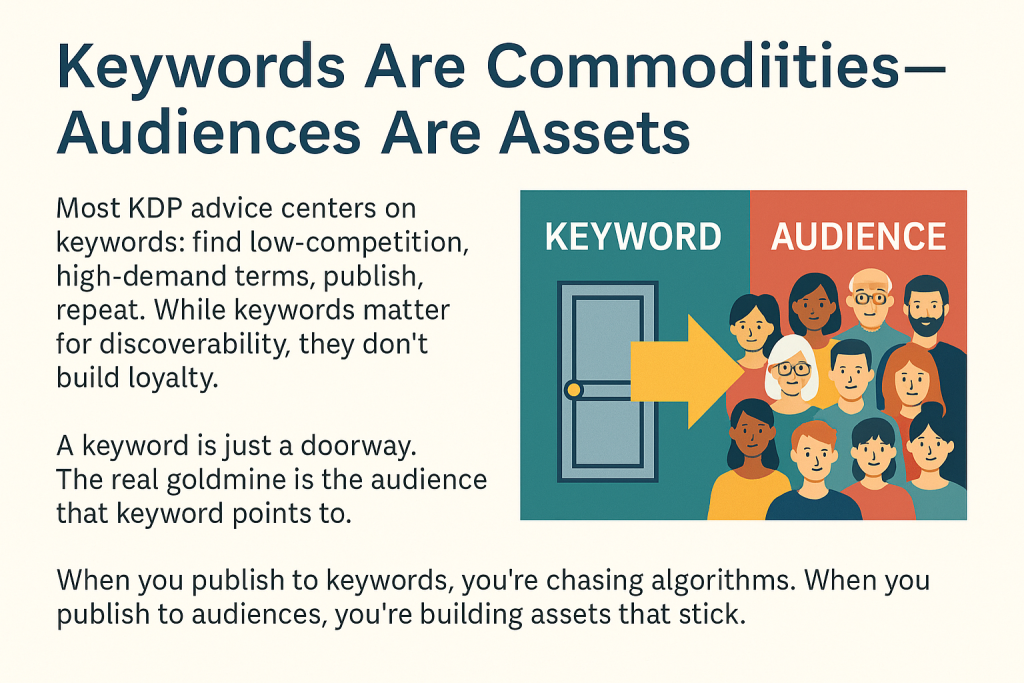
Why This Simplifies Success
When you publish to keywords, you’re chasing algorithms. When you publish to audiences, you’re building assets that stick.
Consider this difference: keyword focus targets “gratitude journal” and faces endless competition. Audience focus targets “overwhelmed new moms” and serves an underserved, hungry market.
Create a Daily Calm Planner for New Moms, and you bypass the crowded keyword race by matching a specific audience pain point.
Practical Steps
Go beyond Amazon research. Check Reddit threads, TikTok trends, and Facebook groups to uncover real struggles. Use problem-solution titles that replace generic terms with emotional hooks. Instead of “Planner,” try “Daily Calm Planner for Moms Who Need a Break.”
Build reader personas. Imagine your buyers—college students balancing classes, entrepreneurs needing structure, teens battling anxiety. Design books for them, not for an algorithm.
What would happen if you stopped thinking of your books as “journals” and started thinking of them as transformation tools for specific groups of people?
One publisher noticed college athletes were underserved. They created a Workout + Study Planner for College Athletes, combining academic planning with fitness tracking. Sales skyrocketed because the audience instantly thought, “This is for me.”
The Hidden Power of Bundles and Series
Why It’s Not Widely Known
Most low content publishers think one-dimensionally: one book equals one product. Savvy publishers understand that bundling and series creation multiply perceived value.
Customers love sets—they feel more valuable. Amazon rewards series because they build a “brand footprint.” Cross-promoting increases average order value without new marketing costs.
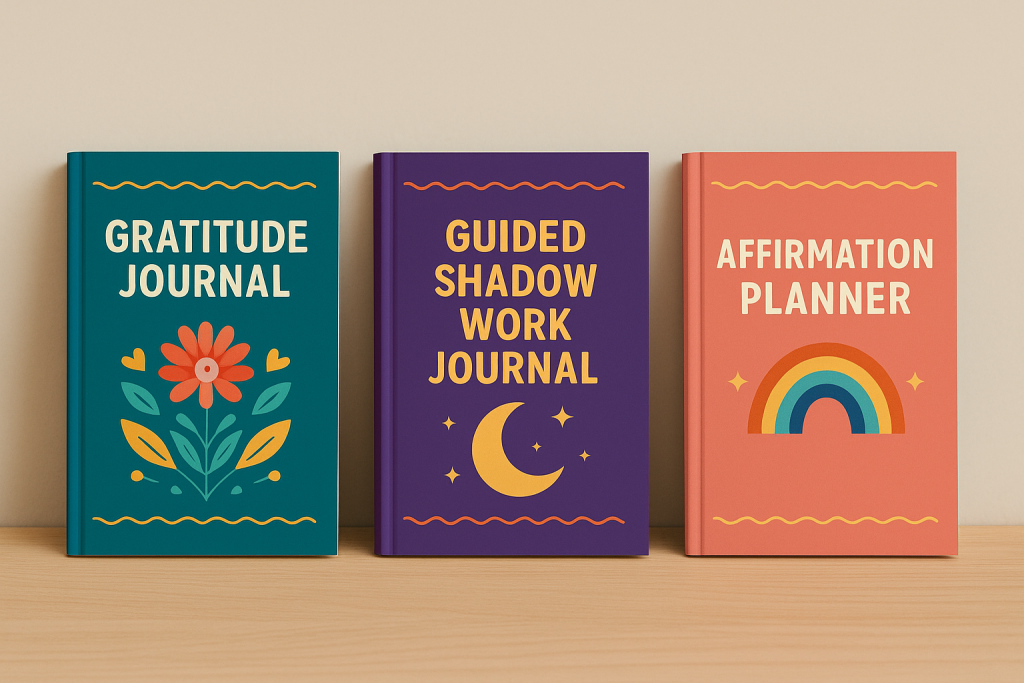
Instead of selling one $6.99 planner, imagine offering a 3-book Mindfulness Series: Journal + Planner + Gratitude Workbook for $18.99. Same audience, triple the revenue.
Instead of selling one $6.99 planner, imagine offering a 3-book Mindfulness Series: Journal + Planner + Gratitude Workbook for $18.99. Same audience, triple the revenue.
Practical Steps
Plan ahead as a series rather than creating random books. Design connected sets. Cross-promote in your book interiors with back-page ads for other titles. Experiment with bundles, multi-packs, or box sets.
One seller launched a Kawaii Planner Series with four connected books. Instead of one bestseller, they built a collector’s set. Fans didn’t just buy one—they bought them all.
If someone loves one of your books, are you giving them a reason to buy three more?
Mid-Content Is the Future (and Hardly Anyone Talks About It)
Most creators split publishing into two extremes: low content (journals, planners, notebooks) and high content (novels, nonfiction, textbooks).
Between these lies mid-content—guided journals, workbooks, activity books—which blends low content’s simplicity with high content’s perceived value.
There’s less competition because most creators stick to basic low content. Readers perceive higher value, and you gain better pricing power. Mid-content books can sell for $9.99–$14.99 instead of $5.99.
Compare these examples: “Gratitude Journal” sells for $6.99, while “90-Day Guided Gratitude Journal with Daily Prompts” commands $12.99. Same niche, double the price point.
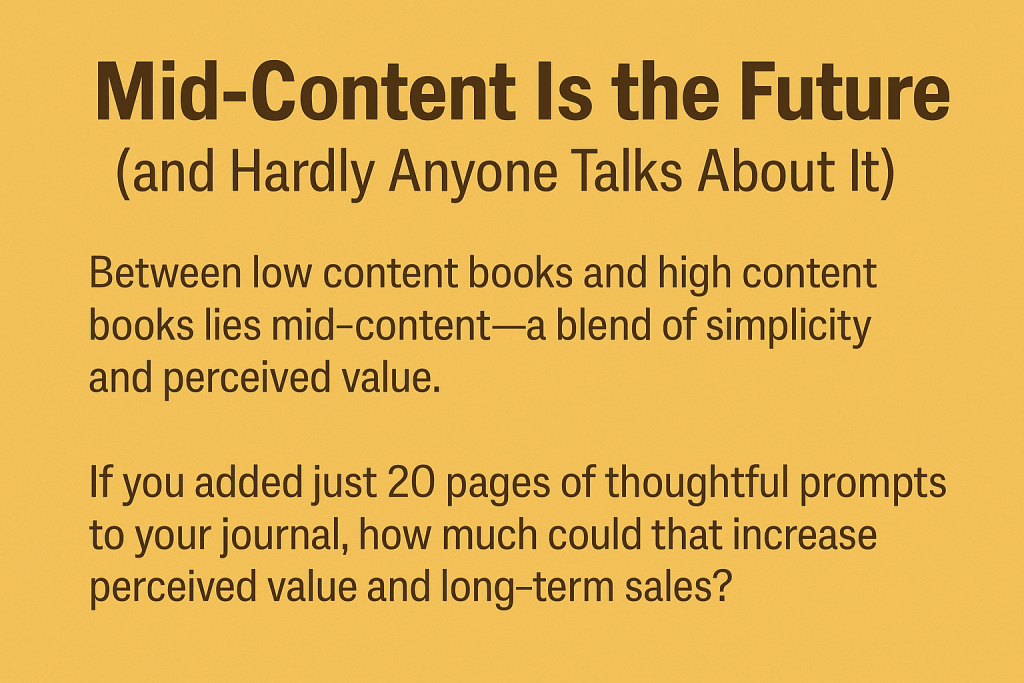
Upgrade existing books by adding guided prompts, reflection exercises, or daily trackers. Think transformation, not page count. What change will this book help the reader achieve? Use mid-content as upsells—create both a simple version and a premium guided version.
A publisher tested two versions of a fitness journal. The plain logbook sold moderately. The 90-Day Guided Fitness Journal with prompts outsold it 3:1 at a higher price.
If you added just 20 pages of thoughtful prompts to your journal, how much could that increase perceived value and long-term sales?
Branding Beats Books (The Secret No One Preaches)
Most low content publishing advice comes from short-term hustlers focused on quick wins. They don’t discuss branding because they don’t plan to stick around.
But branding separates hustlers from publishers.
Branding creates trust and loyalty. When someone loves one of your books, they’ll look for your name again. Without branding, you’re just another anonymous seller competing on price alone.

Branding doesn’t require complexity: consistent cover design language, a recognizable pen name or imprint, and an “About the Creator” page that builds connection.
Create a cohesive design language using repeating fonts, colors, and motifs. Set up an Amazon Author Page to showcase your brand as a publisher, not a random seller. Add personality by speaking directly to your readers in blurbs and bonus pages.
A publisher branded around “Mindful Journals for Modern Moms.” Their consistent covers, clear pen name, and relatable messaging made buyers search for their name specifically. Instead of one-off sales, they built repeat customers.
Are you building a recognizable brand that customers can trust, or just throwing books into the void hoping one sticks?
The Real Game-Changer in Low Content Publishing
Here’s the secret most people overlook: it’s not about flooding Amazon with hundreds of random journals. It’s about depth, audience connection, and brand-driven publishing.
Focus on depth over breadth through series rather than random books. Build audience assets, not just keyword rankings. Create bundles and mid-content upgrades. Invest in long-term branding.
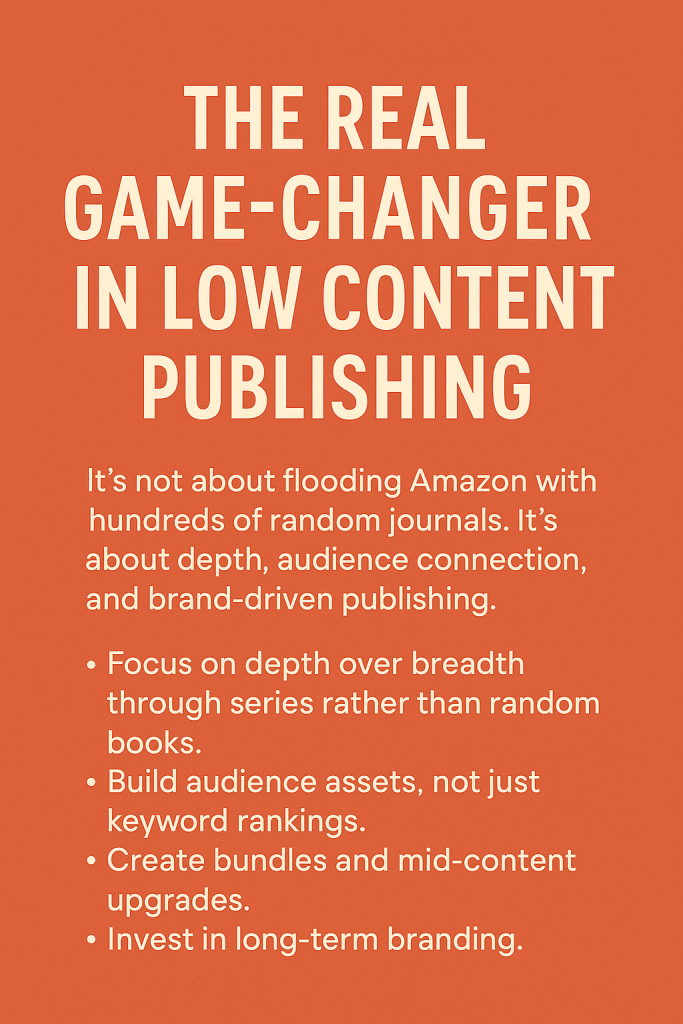
This approach gets you out of the low-value, race-to-the-bottom game. Instead, you become a go-to publisher who earns trust, loyalty, and higher profits.
You have a choice: keep publishing in shallow waters with everyone else, or step into the deep end where real results happen.
Start today. Identify one audience you can serve deeply. Upgrade your best idea into a mid-content book. Brand your series so readers recognize your work.
The moment you shift from “just another notebook” to an audience-driven publishing strategy, everything changes.
Ready to take the leap? The publishing business that lasts starts with understanding your audience better than anyone else does.



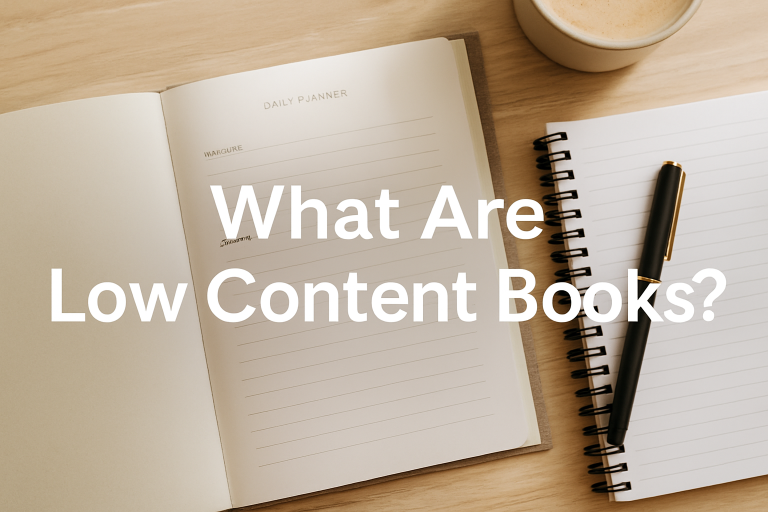

Fantastic read! 👏 I really appreciate how clearly you explained the topic—your writing not only shows expertise but also makes the subject approachable for a wide audience. It’s rare to come across content that feels both insightful and practical at the same time. At explodingbrands.de we run a growing directory site in Germany that features businesses from many different categories. That’s why I truly value articles like yours, because they highlight how knowledge and visibility can create stronger connections between people, services, and opportunities.Keep up the great work—I’ll definitely be checking back for more of your insights! 🚀
Thank you for the comment. It is much appreciated.